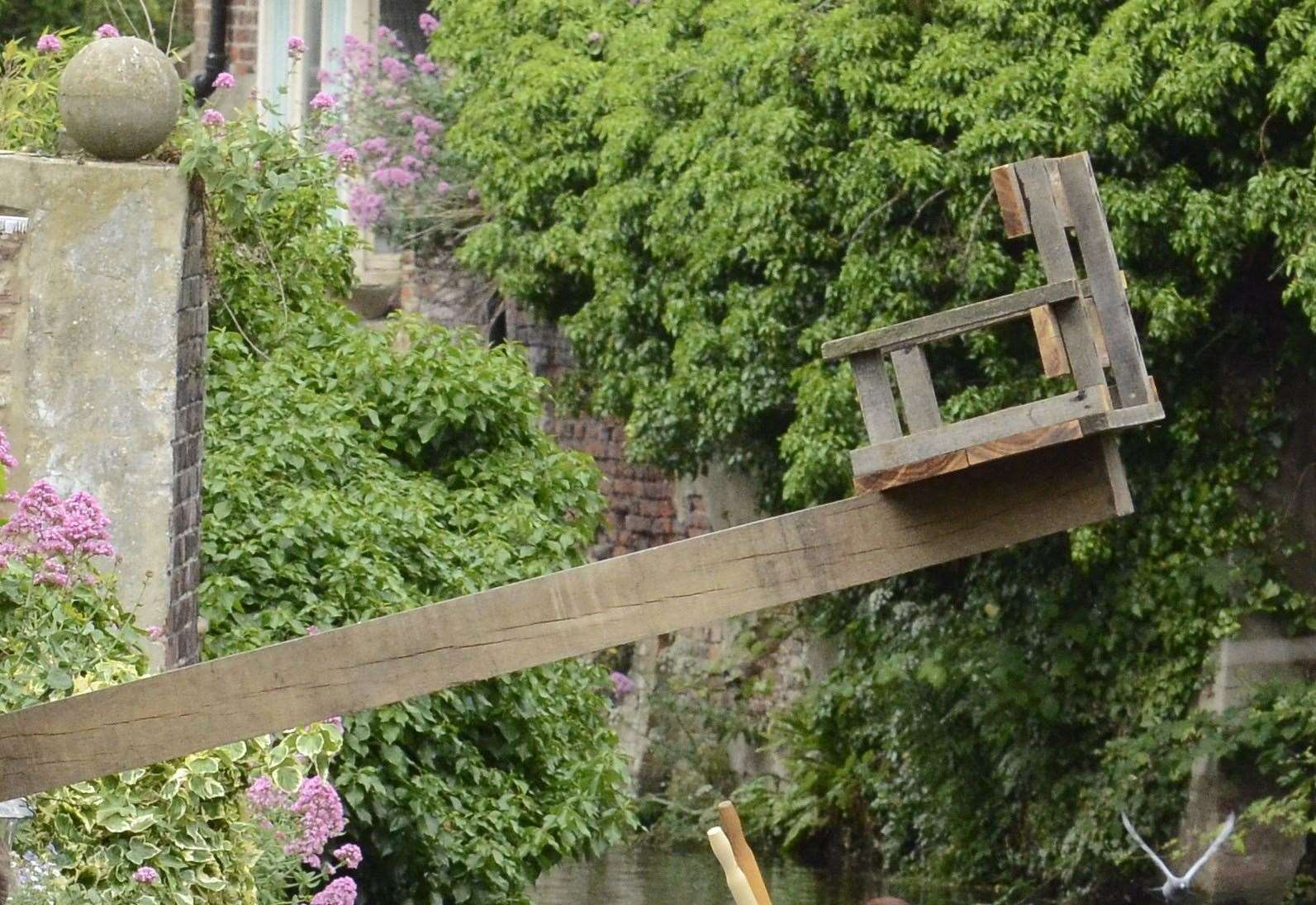If you stand on the High street in Canterbury, UK, above river Stour between Old Weavers House and ASK Italian and look along the water, you will notice weathered, crudely made device, resembling stool perched on the long pole. It is called ducking stool, the cucking stool, or stool of repentance.

Unsurprisingly the most popular story associated with this device is that it was used in medieval trials for witchcraft: accused would be tied to the chair and ducked in the river, if she floats – she is a witch, otherwise she would drown. While such trials did take place in medieval times elsewhere, there is no evidence of it happening in Canterbury. In fact according to some sources there is no evidence of use of such device is Canterbury at all.
The ducking stools are believed to be used across Europe until beginning of nineteenth century mainly as a humiliating punishment for dishonest merchants, and even disobedient wives (providing husband would pay for service).
Current structure was installed in 2017 to replace dilapidated old one by Canterbury River Tours operator. It is unknown who was maintaining the structure before. Number of debates sparked around the stool recently including whether it is appropriate to display a reminder of violent past in public spaces.
https://www.kentonline.co.uk/canterbury/news/calls-to-remove-ducking-stool-branded-ridiculous-228642/: Ducking Stool of Canterbury.
